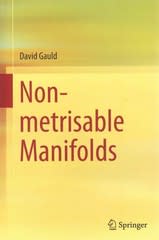Answered step by step
Verified Expert Solution
Question
1 Approved Answer
Business Calculus Q1 Use the four-step process to find f'(x) and then find f'(2), f'(4), and f'(6). f(x) = 104x +1 f'(x) =]Refer to the











Business Calculus
Q1











Step by Step Solution
There are 3 Steps involved in it
Step: 1

Get Instant Access to Expert-Tailored Solutions
See step-by-step solutions with expert insights and AI powered tools for academic success
Step: 2

Step: 3

Ace Your Homework with AI
Get the answers you need in no time with our AI-driven, step-by-step assistance
Get Started


